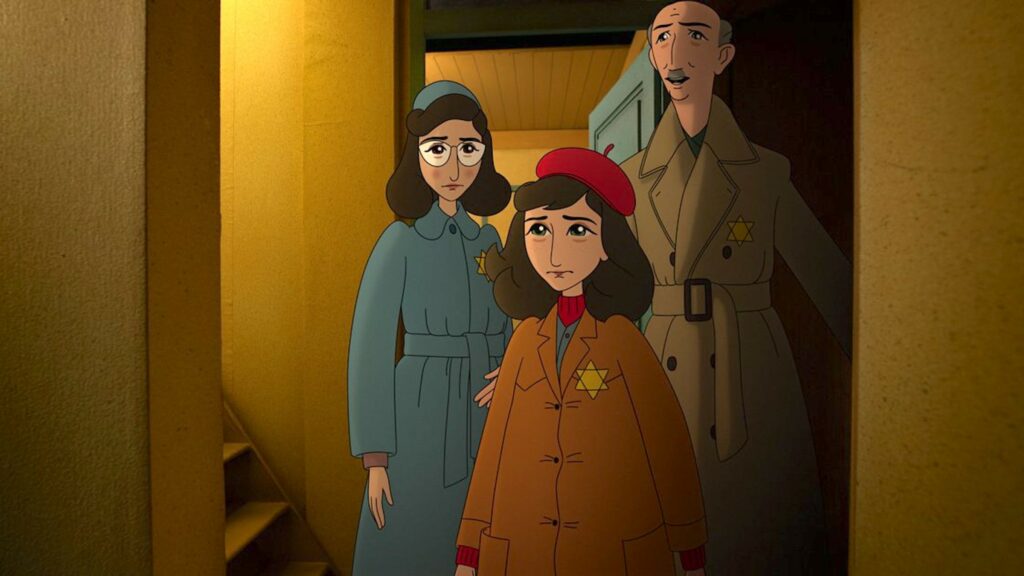Ari Folman’s intriguing creation, Where is Anne Frank, explores and reimagines the past by intertwining Anne’s diary entries with the modern day in a fresh, thought-provoking way.
Most audience members will be familiar with the broad strokes of Anne Frank’s story, yet the horror inflicted upon her family, and the depths of their suffering are not always easy to fathom. In truth, for those of us safely tucked up in bed at night far from a war-torn country, it is impossible to fully grasp. Where is Anne Frank does a commendable job of opening our eyes, retelling the well-known story under the unassuming guise of an animated film, all the better to fool the audience into a false sense of security. The result is a Holocaust film whose violence and destruction appear all the more obscene for its format – just as war should be portrayed.

Jumping between the WWII era and the modern day, Where is Anne Frank unravels the familiar yet intriguing story of Anne Frank (voiced by Emily Carey), both as a young girl desperately trying to survive the Nazi regime and as the voice of the legacy she left behind.
Fascinatingly, this production stands out from other Holocaust films by reimagining the world-renowned diary as a real-life girl, otherwise known as our protagonist, Kitty (voiced by Ruby Stokes). Through her perspective we are introduced to the ‘actual’ Anne Frank: scared, angry and brilliantly imaginative, and invited to question the circus which has been whipped around her memory in the years since her passing. Of greatest importance, however, is the political undercurrent throughout this film, which challenges us to face our own hypocrisy, drawing comparisons between the past and present and calling out the audiences’ double standards as we worship one refugee while dehumanising and deporting our own modern day victims of war.
Without a doubt, Where Is Anne Frank is a visually compelling film with a good heart and an interesting storyline. It walks a fine line between exploring a true and terrible past event and challenging the modern cultural memory that could allow history to repeat itself, all while educating and entertaining its audience. Overall, its effort should be applauded.

Yet, while fantastic as a family film, the modern-day plot is a tad too thin to fully engage adult audiences – an issue which the main love story not only fails to cover but actively highlights by its own pointlessness. It feels formulaic and insincere, as though the producer felt they should throw in a romance to add drama, rather than the film warranting it. Moreover, for all the time we spend with Kitty and all the understanding we gain about her struggle as Anne’s imaginary friend, it never truly feels like we come to know her. Instead, we are left with the ghost of her character, almost tangible yet not fully realised.
A film brimming with potential, Where is Anne Frank is a unique and intriguing new exploration of the Holocaust and how the past continues to affect the present. Despite its flaws, it raises important questions and takes its role as media seriously, simultaneously entertaining and educating its audience to great effect.
Find Where is Anne Frank in UK and Irish cinemas from August 12th.
